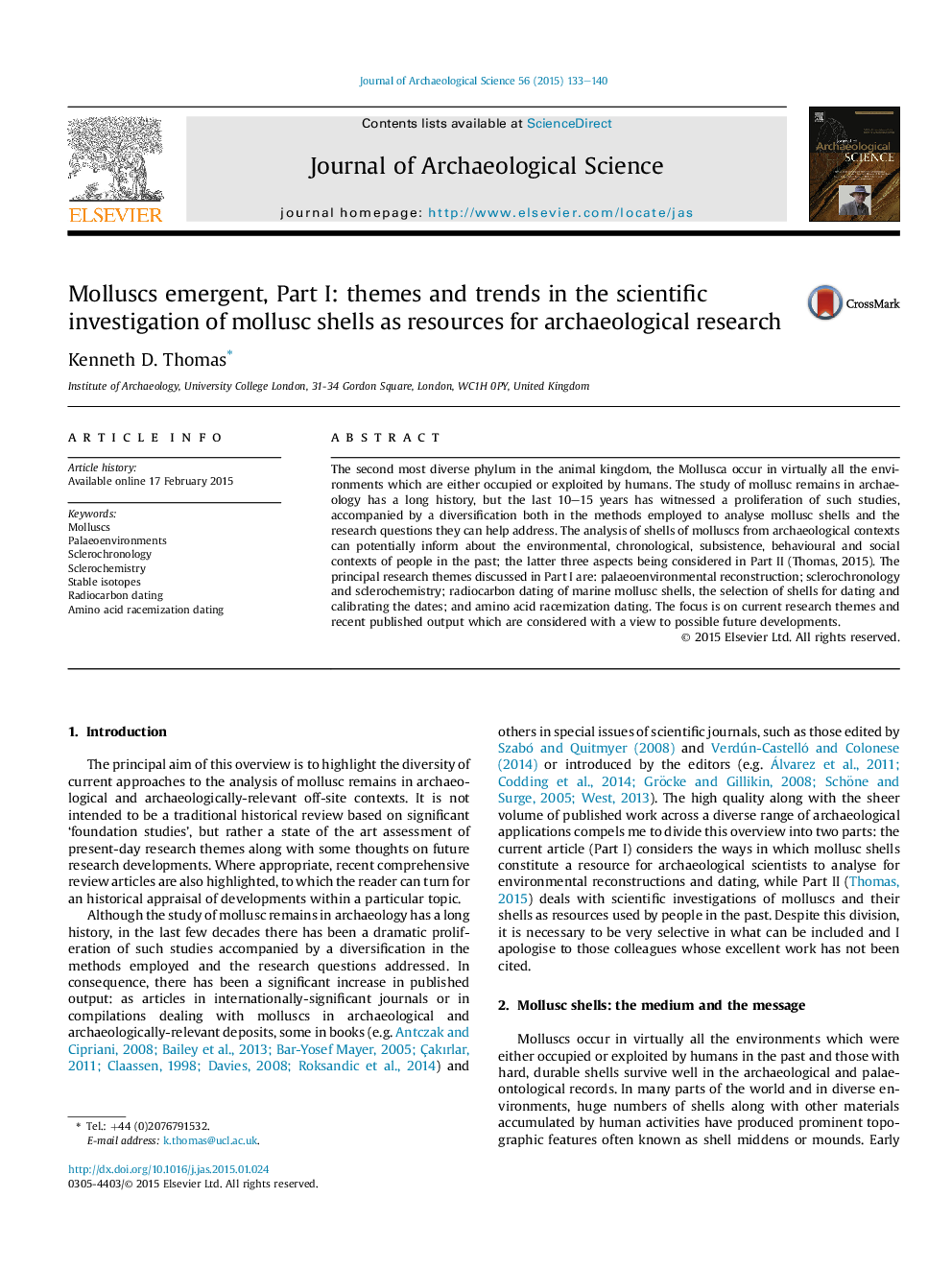| Article ID | Journal | Published Year | Pages | File Type |
|---|---|---|---|---|
| 7442191 | Journal of Archaeological Science | 2015 | 8 Pages |
Abstract
The second most diverse phylum in the animal kingdom, the Mollusca occur in virtually all the environments which are either occupied or exploited by humans. The study of mollusc remains in archaeology has a long history, but the last 10-15 years has witnessed a proliferation of such studies, accompanied by a diversification both in the methods employed to analyse mollusc shells and the research questions they can help address. The analysis of shells of molluscs from archaeological contexts can potentially inform about the environmental, chronological, subsistence, behavioural and social contexts of people in the past; the latter three aspects being considered in Part II (Thomas, 2015). The principal research themes discussed in Part I are: palaeoenvironmental reconstruction; sclerochronology and sclerochemistry; radiocarbon dating of marine mollusc shells, the selection of shells for dating and calibrating the dates; and amino acid racemization dating. The focus is on current research themes and recent published output which are considered with a view to possible future developments.
Related Topics
Physical Sciences and Engineering
Materials Science
Materials Science (General)
Authors
Kenneth D. Thomas,
